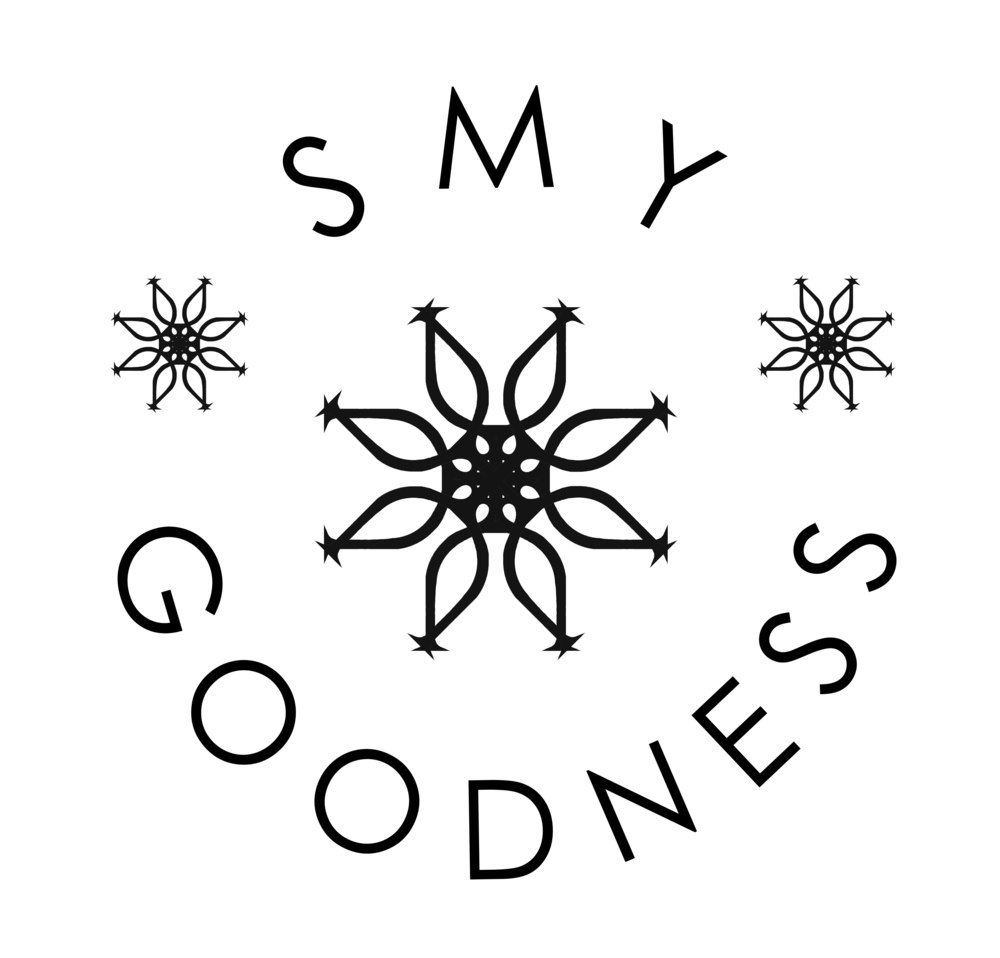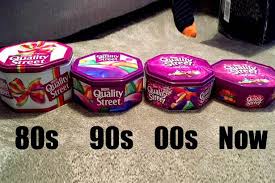This mini-episode is just a little taster, chocolate will get a FULL ON episode in the future, here we are just focusing on Christmas chocolates such as chocolate coins, chocolate tins and trays. From its roots in South and Central America cacao has created joy and good tidings everywhere it has gone and we love to gift it, share it and eat it at Christmas.
yougov.uk did a really snazzy poll this year to find out which chocolates were the favourites from the Roses, Quality Street, Celebrations and Heroes Christmas tubs. Comments unanimously denounced the size and quality of the sweets, the plastic tub which has replaced the tins, the moment that Cadbury’s succumbed to Kraft, the fallen sweets of yesteryear which have been retired and my favourite comment from 1984again - “Anyone who likes chocolate would not eat any of this stuff. It's not chocolate anymore.”
Milk chocolate was invented in 1876.
Chocolate is made from the seeds of the cacao plant native to Central and South America and was vital to the Maya and Aztec who used a raw bitter cacao drink ceremoniously in wedding, battle and burial rituals. It was not consumed by all but reserved by the elite.
From the cacao tree we get the seeds or nuts which result in raw cacao power when the cocoa beans are un-roasted and cold-pressed. Cocoa powder has been roasted under high heat.
Raw cacao powder is full of antioxidants,contains protein, calcium, carotene, thiamin, riboflavin, magnesium, and sulfur. high in valuable enzymes, can reduce blood pressure and chances of cardiovascular disease, can raise serotonin levels.
Spanish Explorer Cortez brought back a recipe and the necessary equipment and had experimented with adding heat to the mixture to make it more palatable.
Cacao was not an immediate success when it was introduced to Spain in the early 16th century… but once sugar was added to cocoa powder and served warm, it really took off and its benefits and its status as a drink of the wealthy and specifically a drink of Spain.
Eventually warm cocoa spread to France and the rest of Europe and took over as a predecessor to tea and coffee-houses with wealthy men enjoying the custom of drinking hot cocoa at specific cafe-like houses where thy would discuss politics and current events.
The industrial revolution improved grinding process and introduced additives which brought down the cost of cocoa and widened the audience of those who would enjoy it.
In 1847 the world saw it’s first chocolate bar as chocolate went from being a drink to an edible food.
Chocolate shaped like coins, wrapped in gold foil given to children and put in stockings at Christmas and given to children during Chanukah. This tradition also has links to the tradition of St Nicholas gifting gold to the poor as told in the Twelve Foods of Christmas orange episode.
Chocolate manufacturers soon found an opportunity in Christmas chocolate selections that they could sell high price offerings that were popular amongst families who they would provide with an array of chocolates.
A few years back I decided to bundle all my interests together and rebrand from Smy Chutney to Smy Goodness so that all my preserves, crafts, products and workshops could live together in one place. My own podcast seemed a suitable place to uncover, understand and enjoy things related to food, art, history and design. Please do share your stories, knowledge, questions and suggestions. In the Smy Goodness.com podcast section you will find the podcasts and all the items that we are discussing and will have ongoing discussions about each week.
You can also follow Smy Goodness on Instagram, Twitter, Facebook and Tumblr. I'd like to thank Ashley Palmer for use of his Roland R-09 and Matteo Borea for creating the music. Thank you for listening.
-
April 2023
- Apr 29, 2023 Ep43 - Break Me Off a Piece of That Kit Kat...Pod (Food History and Food Art) Apr 29, 2023
-
March 2023
- Mar 7, 2023 Ep42 - Music, Minerals, Mangia! with Maddalena Ghezzi Mar 7, 2023
- November 2022
-
April 2022
- Apr 26, 2022 Ep40 - As Art As Vinegar - Vinegar Art History Apr 26, 2022
- Apr 5, 2022 Ep39 - Sour Power of Vinegar Half Hour - Part 1 - Vinegar Food History Apr 5, 2022
-
August 2021
- Aug 21, 2021 Tasty Tunes with Smy Goodness - We All Scream For Ice Cream - TT6 - 19/08/2021 - (K2K Radio) Aug 21, 2021
-
June 2021
- Jun 18, 2021 Tasty Tunes with Smy Goodness - Songs To Eat Chocolate To - TT5 - 20/05/2021 - (K2K Radio) Jun 18, 2021
-
April 2021
- Apr 16, 2021 Tasty Tunes with Smy Goodness - Coffee Croonings and Chords - TT4 - 18/03/21 (K2K Radio) Apr 16, 2021
-
February 2021
- Feb 27, 2021 Tasty Tunes with Smy Goodness - Avocado Anthems - TT3 - 18/02/21 (K2K Radio) Feb 27, 2021
-
January 2021
- Jan 19, 2021 Tasty Tunes with Smy Goodness - HOT SAUCE SAUCY SONGS - TT2 - 21/01/21 (K2K Radio) Jan 19, 2021
- Jan 7, 2021 Tasty Tunes with Smy Goodness - MUSHROOM MUSIC - TT1 - 17/12/20 (K2K Radio) Jan 7, 2021
-
December 2020
- Dec 31, 2020 Ep38 - Mushroom Depictions in Art - Pt 4 of Mystic, Magic and Mealtime Mushrooms Dec 31, 2020
- October 2020
-
September 2020
- Sep 25, 2020 Ep36 - Mushrooms - Mystic, Magic and Mealtime - Pt 2 - Fungi Folklore Sep 25, 2020
- Sep 9, 2020 Ep35 - Mushrooms - Mystic, Magic and Mealtime - Pt 1 - Shamans and Shrooms Sep 9, 2020
-
June 2020
- Jun 26, 2020 Ep34 - Smy Thoughts - Racism and Racist Imagery in Food and Art Jun 26, 2020
-
May 2020
- May 25, 2020 Ep33 - Flour Power and Superb Herbs - Quarantine Catch-up with Aimée Furnival of Another Studio May 25, 2020
-
January 2020
- Jan 20, 2020 Ep32 - Pomegranate memories with Freelance Writer and Journalist Sophie Jean-Louis Constantine Jan 20, 2020
-
November 2019
- Nov 30, 2019 Ep31 - Pomegranate - Superfood, Seeds, Symbolism and Stories Nov 30, 2019
-
October 2019
- Oct 1, 2019 Ep30 - Fashion and Food with Em and Ems - Emilio de la Morena and Emmerline Smy Oct 1, 2019
-
May 2019
- May 31, 2019 Ep29 - Lobster Tails, Lobster Rolls and Lobster Tales with Lobsterman Greg Weeks May 31, 2019
-
March 2019
- Mar 28, 2019 Ep28 - Mastic, Mastiha, Mummies and Massage with Aristea Zougri of Althea Massage Therapy and Yoga Mar 28, 2019
- Mar 7, 2019 Ep27 - Feed A Lady Marmalade - Voulez-vous écouter avec moi ce soir Mar 7, 2019
-
November 2018
- Nov 29, 2018 Ep26 - Octopus, Polpo, Pulpo, Tako: Takoyaki - My Delicious Dilemma Nov 29, 2018
-
June 2018
- Jun 26, 2018 Ep24 - Fiori di Zucca with Orso Tosco, author of Aspettando I Naufraghi Jun 26, 2018
-
May 2018
- May 23, 2018 Ep23 - A Rhubarb of a Pickle of a Jam May 23, 2018
-
December 2017
- Dec 31, 2017 Ep22 - From Christmas to New Year's Eve - Champagne, Prosecco and Cava Dec 31, 2017
- Dec 30, 2017 Ep21 - Christmas Chocolates - Twelve Foods of Christmas Dec 30, 2017
- Dec 29, 2017 Ep20 - Gin & Sloe Gin - 12 Foods of Christmas Dec 29, 2017
- Dec 24, 2017 Ep19 - Christmas Chutney - Twelve Foods of Christmas Dec 24, 2017
- Dec 20, 2017 Ep18 - Cheese - Twelve Foods of Christmas Dec 20, 2017
- Dec 17, 2017 Ep17 - Oranges - Twelve Foods of Christmas Dec 17, 2017
- Dec 15, 2017 Ep16 - Mulled Wine - Twelve Foods of Christmas Dec 15, 2017
- Dec 14, 2017 Ep15 - Christmas Goose - Twelve Foods of Christmas Dec 14, 2017
- Dec 13, 2017 Ep14 - Cinnamon - 12 Foods of Christmas Dec 13, 2017
- Dec 12, 2017 Ep13 - Cranberry Sauce - Twelve Foods of Christmas Dec 12, 2017
- Dec 10, 2017 Ep12 - Brussel Sprouts - Twelve Foods of Christmas Dec 10, 2017
- Dec 7, 2017 Ep11 - Mincemeat - Twelve Foods of Christmas by Smy Goodness Podcast Dec 7, 2017
-
November 2017
- Nov 23, 2017 Ep10 - Plates and Platters with Tim Parker of You'll Soon Know on NTS Nov 23, 2017
-
October 2017
- Oct 26, 2017 Ep9 - Anyone Sycophancy a Fig? Oct 26, 2017
-
September 2017
- Sep 19, 2017 Ep8 - Dumplings with Peiran Gong and Tongtong Ren of Chinese Laundry Room Sep 19, 2017
-
August 2017
- Aug 22, 2017 Ep7 - Bunches of Grapes Aug 22, 2017
- Aug 3, 2017 Ep6 - Ice Cream w/Tara Esperanza of T.O.I.C. - Tara's Organic Ice Cream Aug 3, 2017
-
May 2017
- May 2, 2017 Ep5 - Pancakes & Creativity w/Aimee Furnival of Another Studio May 2, 2017
-
April 2017
- Apr 18, 2017 Ep4 - Canapés w/Diana Pinkett of Vegan Peasant Catering Apr 18, 2017
-
March 2017
- Mar 7, 2017 Ep2 - Popping Cherries w/Mike Wolff Mar 7, 2017
-
February 2017
- Feb 20, 2017 Ep1 - Emilio de la Morena & Quince Feb 20, 2017
- Feb 10, 2017 Ep0 - Introducing Smy Goodness Podcast Feb 10, 2017






